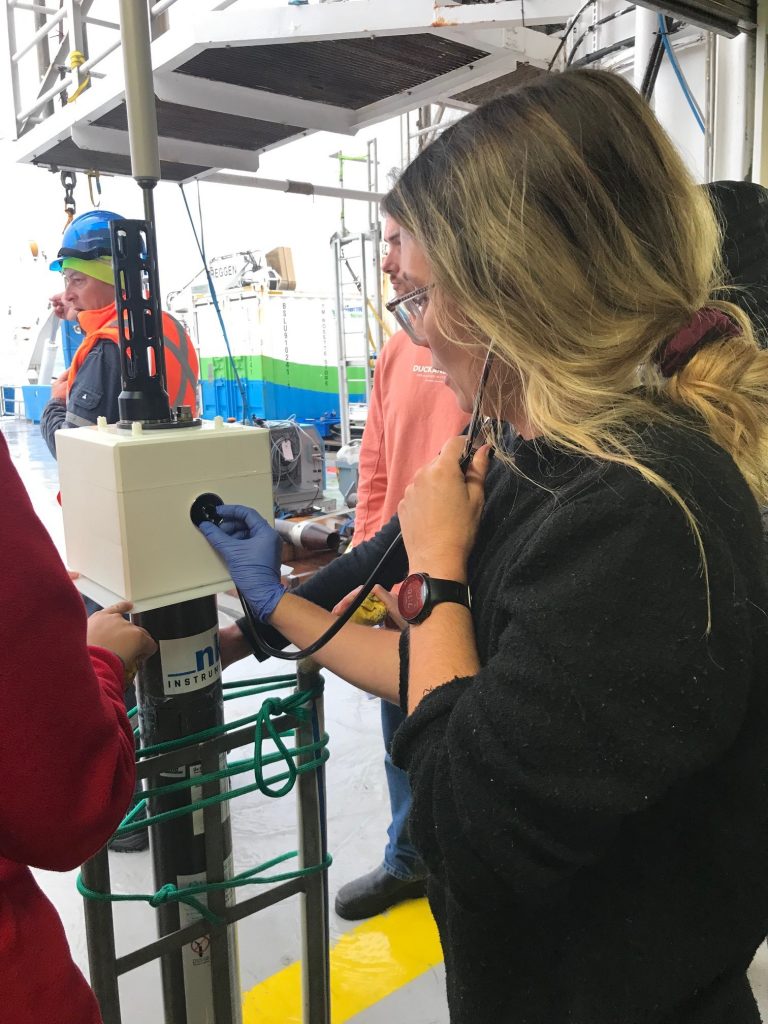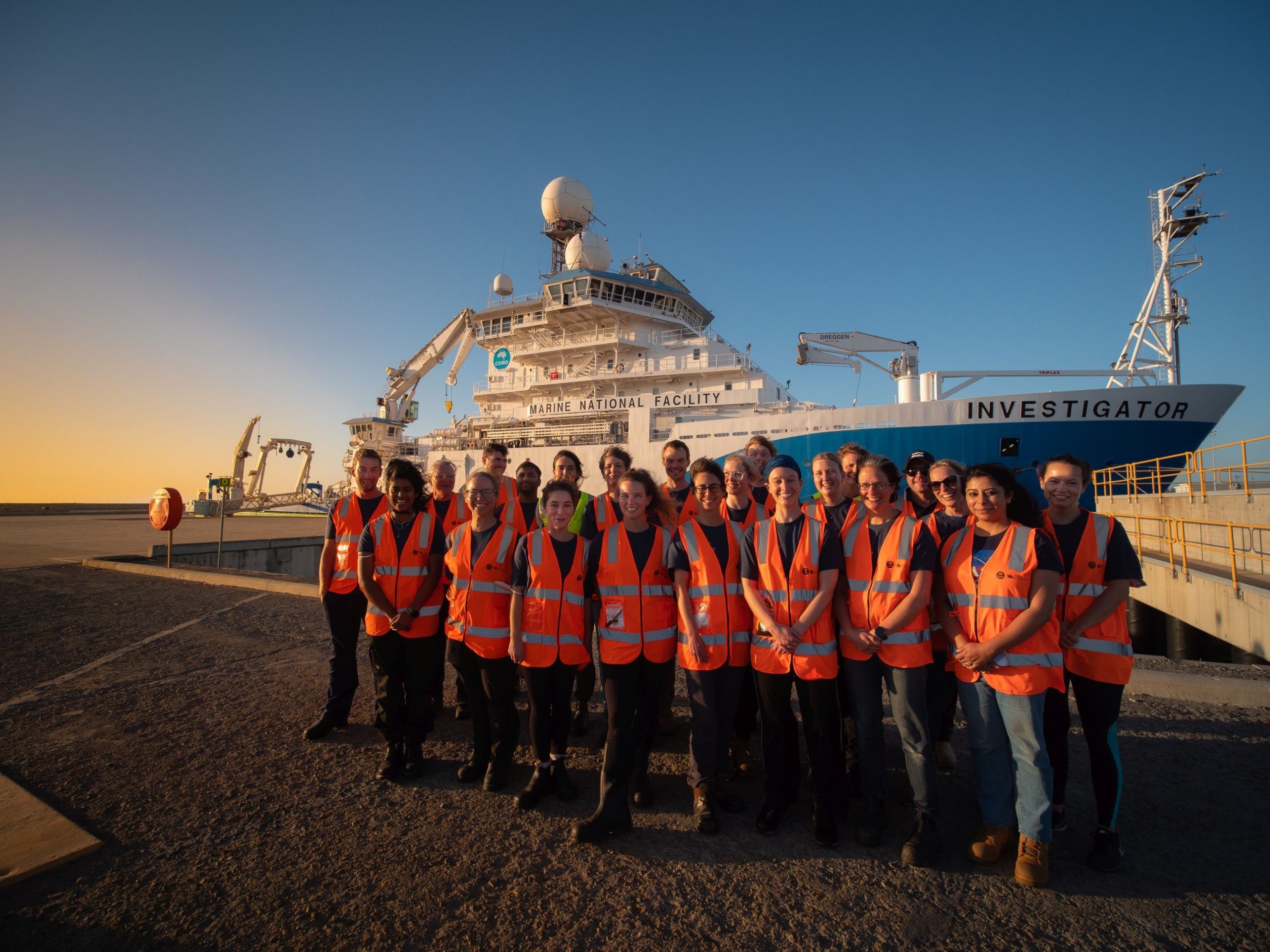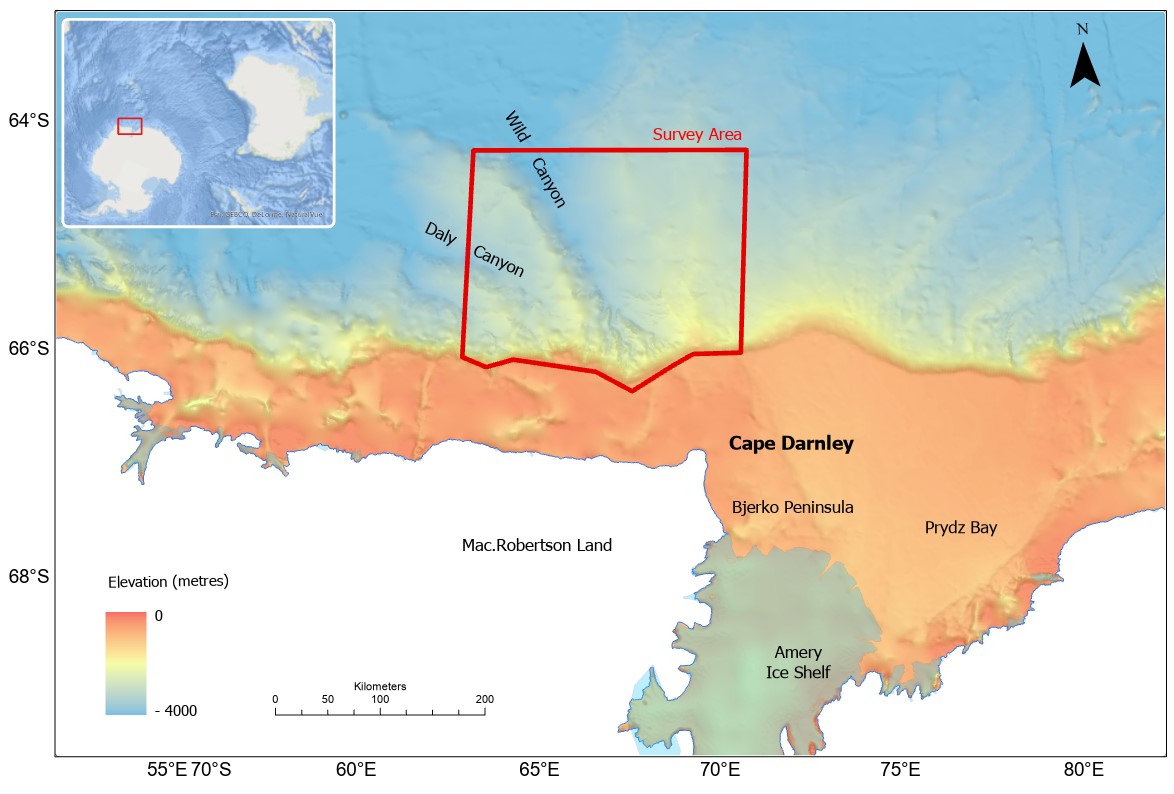Ocean currents

Image: Kathy Gunn checking the Argo signal before deployment. Photo: A. Post
Dr Kathy Gunn (Physical Oceanographer, CSIRO)
As early as the 1960s, over 165,000 marked bottles were strategically released to measure the speed and direction of ocean currents. Less strategically, a cargo ship accidentally spilled almost 30,000 bath toys (mostly rubber ducks) into the Pacific Ocean in the 1990s; the ducks were incidentally used to measure the lifetime of an ocean gyre.
Oceanographic drifters have become more sophisticated over the years with the development of ‘profiling floats’ that drift in the currents of the ocean, but also rise and fall vertically in the water.
The largest international float program – collecting over 400 profiles a day – is called Argo. Argo floats are a 1.5 m tall cylinder with a CTD (Conductivity, Temperature, Depth) instrument and antenna on its top and a buoyancy-controlling bladder on its base. They are pre-programmed with missions that tell the float how long to spend at certain depths and how frequently to visit the surface. For Argo floats the cycle is typically 10-days; the float drifts at 1000 m depth for 10 days, sinks down to 2000 m, then rises up to the surface whilst measuring the temperature and salinity of the sea water. At the surface, the measurements are transmitted back to data centres via satellite to provide ‘near-real time’ ocean measurements. These data have shown how much the upper ocean changes over months to years and can be used, in conjunction with climate models, to improve predictions of the weather.
On our voyage to East Antarctica on CSIRO research vessel (RV) Investigator, we will release 9 floats into the Southern Ocean and the Cape Darnley region. 6 Argo floats that will measure temperature and salinity and will contribute to the international Argo program. We will also deploy two larger biogeochemical (BGC) Argo floats that will additionally measure biological processes such as the concentration of oxygen and nutrients and fluorescence (an indicator of productivity). The BGC floats aim to understand the changes in the carbon cycle, and the impact of climate change on the ocean ecosystems. The last float is called a ‘DEEP Ninja’, which is a Japanese float that can go extra deep – going down to depths of 4000 m. Their aim is to look at the role of the deep ocean in storing ocean heat and sea-level changes.
While the floats are expensive to build, they are a much cheaper and cost-effective way of measuring the oceans than a fleet of research ships. The development of automated floats and a suite of other new technology such as remotely operated gliders, have revolutionised our understanding of the ocean interior.
Research voyages provide opportunities to deploy the Argo floats, but also undertake other ocean research activities that cannot be automated. For example, on this voyage of RV Investigator we will be collecting water samples at different depths using Niskin bottles on the CTD rosette to study the chemical composition of the ocean (see future blog). We are also interested in studying past changes in ocean currents, over thousands to millions of years (called palaeoceanography), and to do this we will be collecting sediment cores (see future blog).


